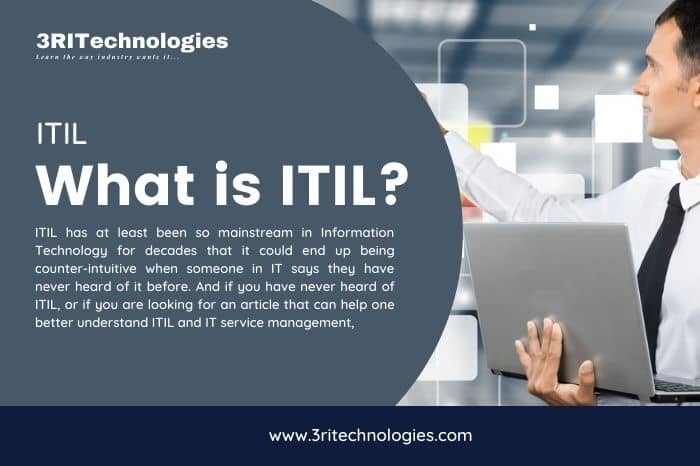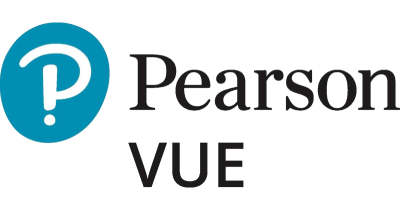ITIL has at least been so mainstream in Information Technology for decades that it could end up being counter-intuitive when someone in IT says they have never heard of it before. And if you have never heard of ITIL or looking for an article that can help one better understand ITIL and IT service management and ultimately help individuals and businesses, we have covered it in this article. In this article, we would explain what ITIL was and how it came into being in the late 1980s. And we will explain why ITIL and IT service management are now relevant to today’s IT organizations and get started with ITIL service management.
Curious about ITIL—what is it and why does it matter in IT service management? The ITIL framework is a globally recognized approach that helps organizations deliver efficient IT services aligned with business needs. From understanding the ITIL process to preparing for ITIL interview questions, mastering this system boosts your credibility in the tech industry. If you’re asking what is ITIL certification or how to start your journey, 3RI Technologies offers industry-recognized ITIL Certification Training. Learn what is an ITIL, gain real-time insights, and get certified to elevate your career.
Understanding the ITIL Framework and Why It Matters
ITIL is a globally recognized framework for digital services. It provides a detailed, functional, and well-established framework for implementing efficient digital or IT enabled services. ITIL is the most comprehensive means of delivering effective digital services. Users and multinationals have implemented the ITIL framework. It makes recommendations to multinationals and users on the use of best practices in Information Technology Service Management (ITSM) as a mechanism to facilitate business development and expansion. ITIL helps define the service provider’s orientation with a consistent business strategy and responds to business practices and customer requirements.
Want to Upskill to get ahead in your career? Check out Job Oriented Courses
What does ITIL mean?
ITIL is the Information Technology Infrastructure Library. With ever-changing technological advances, the approach of IT users and multinationals, most of them impacting the organization, has increased in popularity over the last decade. Indeed, as history shows, the ITIL framework’s significant impact will continue to grow as software and services become more complex. Today, ITIL is no longer an acronym for the Information Technology Infrastructure Library, rather than a stand-alone term.
ITIL Foundation
The Late 1980s: The adoption of the ITIL
This was back in 1972 when IBM cooperated with Information Systems Management Architecture (ISMA). Computer systems had less RAM than a megabyte, a processing speed of 2.5 MHz and a hard disk of 233 MB. In the 1980s, ITIL was designed by the British Government’s Central Computer and Telecommunications Agency (CCTA). For the first time in the mid-1990s, IT workplaces were assigned to ITIL version 1. And over thirty volumes, developed and published, have incorporated in ITSM the best practices of several large and small companies worldwide.
The 2000s: ITIL version2 becomes easier to access and more user-friendly.
In the early 2000s, CCTA and many other agencies joined the Office of Government Commerce (OGC), currently recognized as a Cabinet Office. The ITIL v2 iterative process was the first significant renovation of the IT services framework in 2001. This usually coincides with the widespread adoption by the OGC of the CCTA.
The mission of the OGC was to work towards efficiency, cost-effectiveness in IT business operations and enhanced success in the implementation of IT projects. Accordingly, the ITIL version2 was the first modified form to standardize ITIL and make it easier to improve it from a knowledge-based perspective. The main goal behind the implementation of ITIL v2 was to make the ITSM framework and the information available more user-friendly. ITIL v2 simplified thirty volumes by integrating them into seven key IT business management levels, applications, and services. With this extended version, improved accessibility has also started to emerge for several large and small companies that have not adopted ITIL until that time. Surprisingly, the ITIL v2 framework has soon become the more widely used ITSM with a better approach.

What is ITIL version 3?
2007-2018: ITIL version 3 set up an IT Business Operations Life-Cycle Approach.
ITIL v3 has made lots of improvements to the ITSM framework, including a more flexible volume analysis, a transition to a lifecycle approach, and a growing dependency on business processes. Since 2013, ITIL has been managed by Axelos, enabling companies to use the ITIL framework while managing updates and processing changes. IT Companies do not, however, need a license to use the ITIL framework on an internal basis. In 2011, ITIL was modified to include feedback from users and the professional development community and performance improvement and service packs. And ITIL version 3 has been published, generating updates to ITIL version 2 of the OGC. ITIL version 3 has consolidated ITIL into five volumes, consisting of 26 IT functions and business processes. The five volumes remained the same for ITIL 2007 and ITIL 2011, respectively.
What is ITIL version 4?
2018: ITTIL version 4 is more agile, flexible, and customizable for business organizations.
Axelos released ITIL version 4, which is the enhanced version of the ITIL framework and the most significant change since ITIL version 3 was launched in 2007The latest version of ITIL version 4 was released in 2019, introducing fewer redundancies, increased integration, enterprise-wide communication, and integration into the ITSM strategy. ITIL version 4 focuses on the business needs and the integration of IT companies. ITIL version 4 supports collaboration and focuses on user reviews between IT and other departments. ITIL version 4 allows companies to understand their perception of the quality of their services. ITIL version 4 enables companies to manage risks efficiently and to improve their business processes. In addition to the best cost-effective practices, the development of a dynamic IT environment efficiently. ITIL 4 focuses on the importance of Information Technology (IT), Artificial Intelligence (AI), Cloud Computing, and DevOps.
What is ITSM?
As technological advances are more valuable to almost every business, organizations continually look for new ways to integrate IT services into their overall business needs. ITSM tools maintain IT service business cycles, ranging from training to supervision and maintenance.
In most cases, IT management practices focus on systems, networks, or hardware, while ITSM aims to develop IT services in a secure manner in coordination with business objectives. Now that technology is being targeted across digital or IT companies, ITSM has become a critical aspect that supports the business. ITSM tools are designed to support the efforts of ITSM by standardizing user experience and technical support. This specifies support for IT departments for handling, auditing, and detecting errors in their business activities. The ITSM tools provide an IT strategy based on finance, human resources, and organizational processes. The main objective of the ITSM is to confirm that the purposes of the IT team are consistent with the company’s goals. The ITSM tools automate and track the progress of the company.
What is ITIL Service Management?
Most inconsistent IT processes often lead to inconsistencies between conservative IT companies and their managers. However, there are no collective practices for strengthening and implementing ITIL service management processes. IT-dependent organizations need to define their business objectives and assets, constraints, and culture to make the most of ITIL’s management processes. ITIL service management provides the best methods that give access from business to technology to business needs, in addition to fully IT-dependent organizations that support their core processes. This will also help the IT management team keep the industry by requiring IT services consistent with the company’s objectives and strategies.
ITIL service management consists of 26 processes, each of which is best suited to one of the five best practice stages for each part of the IT service lifecycle:
1. Strategy of the ITIL Service- Specifies the client’s business objectives and requirements.
2. Design of the ITIL Service- Transitional strategies for project objectives to assist businesses.
3. Transition of the ITIL Service -It specifies the implementation of the company.
4. Operation of the ITIL Service: It describes the essential IT service management processes.
5. Improvement of the ITIL Service: It assists ITIL users to develop and assess IT services.
ITIL is the most important international framework for the implementation of IT services. As the leading international ITSM standard, ITIL has led to the development and processing of the largest global IT organizations.
What is the ITIL framework and processes?
ITIL consists mainly of 26 processes and provides a framework for managing IT services within the IT organization. However, almost no successful IT organization decides to concentrate on the simultaneous implementation of all processes. At the same time, IT organizations may continue to perform between 8 and 10 functions.
The majority of the ITIL framework or process is different and includes different aspects of IT. In addition to ITIL service management’s recommendations, it is essential that the organization categorizes and responds effectively to needs. ITIL provides supervision that can be assessed to meet the requirements of the organization, not just as a set of rules. The three establishment strategies aimed at implementing ITIL Service Management are aimed –
providing higher quality support, enabling the business process, and providing improved services.
Why is ITIL Service Management relevant to today’s IT organizations?
ITIL is the most extensive international framework for IT services Management as recognized standards for IT services Management. ITIL has led to the development of IT organizations from leading companies to micro-enterprises worldwide. With the rise of Agile and DevOps, Lean, ITIL remains responsible for providing valuable guidance and guidance on mandatory processes.
ITIL is also one of the world’s largest certification bodies for ITSM professionals. The ITIL process has increased the companies’ productivity in which it is being implemented and has become part of the IT workplace culture.
ITIL Service Management is a set of critical standards and practices. Also, ITIL has been engaged in the development of the most widely deployed IT tools. Many companies have implemented ITIL Service Management to improve their organizational efficiency and save financial resources.
What is Change Management in ITIL?
As we know, ITIL is a rigid set of processes that define how IT organizations deliver services to their potential customers. However, those who study the ITIL framework understand that it is inflexible; besides that, the ITIL life cycle is continuously changing.
Change management has become increasingly important, but it supports all phases of the ITIL life cycle. It is essential to recognize that the IT organization management service’s objectives have been developed and implemented when considering change management.
The Significance of Change Management
Change Management helps to optimize risk and to improve the Management of IT services and business operations. And to establish standard procedures for managing proposed changes in an integrated and holistic manner.
Change Management Benefits
Although no recommended approach, framework or method could ensure maximum success, Change Management can optimize risk and protect IT services from unnecessary failures and support services. The creation and maintenance of reliable business systems seem crucial to any IT organization’s existence in today’s competitive business environment. Improvements to any features and IT infrastructure could adversely affect business services’ value and negatively impact production efficiency. Structured and systematic change minimizes the potential risks of changes to the infrastructure. Simultaneously, there will be significant business benefits from a well-structured and planned change management process.
Change Management has become a vital service transition process, a critical aspect of the ITIL Service Management Framework, which includes developing, deploying, and transitioning new or modified IT services to business operations. Support, including how to withdraw IT services, is also provided. ITIL Service Transition in the IT Life Cycle manages to plan and monitor IT services changes while minimizing risk and improving decision-making for both individuals and businesses.
Adopting and Change Management Implementation in Organizations
Evolution in transformation has never been quicker and more effective, and the advent of top-notch change management makes it much more competitive to cope with new technologies. Implementation of all processes will be a big undertaking, and change management will not be omitted as it is a critical strategic initiative. Besides, it is best to select professionals, prepare and implement the ITIL framework to seek change management validation by corporate representatives and administrators. The implementation of change management must be reflected in the principles of each main shareholder. The assessment of overall Management is also essential to promote the IT Service Management approach to processes. Methods that are effective for the performance of adoption and change Management are-
1. Develop a Strategic Business Case –
Change management can be a daunting concept to understand in a large business truly. Strongly encourage applying the primary objective and advantages of the change management approach to all different stages of the organization, reflecting on the acquisition of group leaders and in the future through the business community. The participation of stakeholders across the board plays a crucial role in the implementation of change management.
2. Designing Change Management to Incorporate Advancement in Services –
To determine the requirements and limits for each form of change to be implemented by the organization. To identify, in a structured manner, the roles of all those engaged in the change management process, including the Change Project Manager, the Change Executive Committee.
3. Implement change to the Business, Leadership Positions and Responsibility-
The change processes mentioned above will provide a framework for determining the preferences of stakeholders and managers. These processes can be related to an ITSM management platform. The method of change management, the staff involved, and the technology used should be continuously checked, and changes need to be implemented to maintain organizational efficiency.
4. Consider the Level of Risk Tolerance-
This may be specifically relevant to industrial relations or maybe the experience of the change management process of the successful Management of the different change methods.
What is ITIL Training?
Axelos took over the ownership of ITIL in July 2013. It is responsible for administering the ITIL framework and certifies the teaching and examination centres. The ITIL Accredited Educational Organizations (ATOs) are registered for the ITIL training course. The ITIL Certification Exams, carried out after the training course or by the Examination Institute (EI), work exclusively with ATOs. Learn more at 3RI Technologies
What is ITIL certification?
ITIL certification is widely recognized in any certification checklist for the required IT certifications and valid reasons. As an IT management system, ITIL can help companies minimize risk, strengthen customer relationships, set up cost-effective systems and create an IT culture that promotes effective communication, development, and transformation.
SkyRocket Your Career with 3RI Technologies
What is ITIL Version 4 Certification?
In 2019, Axelos upgraded ITIL 4 to focus more on ITSM performance, reliability and development while also supporting legacy IT networks and systems. By 2021, ITIL 4 was made open to the public, and Axelos announced its plan to phase out ITIL 3 in the early days of 2022.
The ITIL 4 certification program is the same as the previous ITIL 3 certification programs, except for simplifying the provision of two main classifications with a total of seven modules for both certifications. You might very well switch from the ITIL Foundation to either the ITIL Management Professional (ITIL MP) or the ITIL Strategic Boss (ITIL SL).
ITIL Foundation
The ITIL Foundation is an important initial study of the fundamental concepts of ITIL 4. As an entry-level certificate, the course is designed to teach beginners the basics of ITIL 4 and ensure that even highly trained professionals have the necessary skills to progress to more rigorous training and certification.
The ITIL Foundation course is delivered by ATOS, which will take two and a half days. The exam consists of 40 multiple-choice questions after the class. The exam will take 60 minutes, and the individual will require 26 correct answers.
ITIL MP certification
ITIL MP certification is for IT practitioners working in technology and services around the IT enterprise. It needs the expertise required to coordinate IT programs, teams, and workflows, using Management and technological skills. They would need to pass a set of modules to complete the ITIL MP certification:
ITIL Specialist Create Deliver & Support:
This module covers vital IT process management techniques, service performance and service consistency and improvement methods and focuses on ITSM practitioners responsible for the final execution of IT development factors.
ITIL Specialist Drive Stakeholder Value:
This module requires the role and cooperation of stakeholders, customers, and service providers. The practitioner will address SLA development, multi-supplier’s Management, networking, collaboration management, design and customer chart or mapping.
ITIL Specialist High-Velocity IT:
Applicants will learn how to combine agile approaches with other technical developments, including cloud, automation, and completely automated monitoring, to improve customer service efficiently.
ITIL Strategist Direct Plan & Improve:
This module explores the practical skills that candidates require to build a sustainable strategic direction for learning and improving IT organizations. Also, it will concentrate on how to use agile approaches to prepare and enhance productivity successfully.
ITIL Strategic Leader (SL)
ITIL SL certification is not just an IT operation but all technology-activated implementations within the organization. This certification represents the influence of IT practices and recommends industry practices. The practitioner will need to complete two exam modules to obtain the ITIL SL certification:
ITIL Strategist Direct Plan & Improve: This module covers the expertise needed to analyze and diversify the IT services sector.
ITIL Leader Digital & IT Strategy: In the second module, practitioners can learn how to align industry, and IT approaches and navigate new technologies.
ITIL Master
If the practitioner completes all the modules required for both the MP and SL qualification modules, they will apply for the ITIL Master designation. They will need at least five years of experience in IT service management at Management, Management, or higher management advisory level to become ITIL master.
The ITIL 4 certification would further boost salaries by increasing the sum that IT employees will receive in various occupations. On average, IT staff or comparable employees using ITIL 4 would receive an average annual wage of $96,000 a year based on PayScale’s findings.




